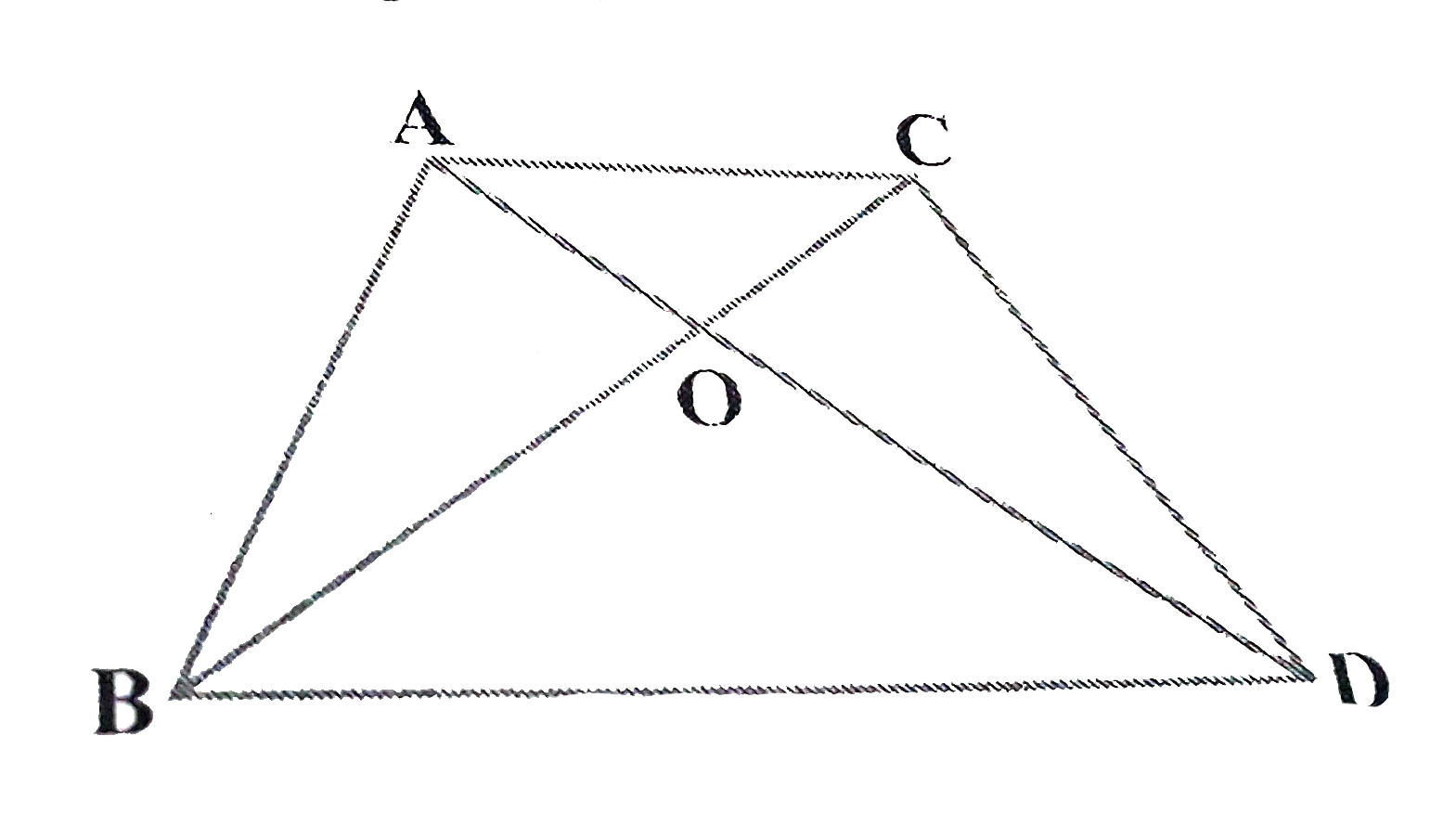A point O is taken inside an equilateral four sided figure ABCD such that its distances from the angular points D and B are equal. Show that AO and OC are in one and the same straight line. GIVEN : A point O inside an equilateral quadrilateral four sided figure ABCD such that BO=OD. TO PROVE : AO and OC are in one and the same straight line.
To solve the problem, we need to show that lines AO and OC are in the same straight line given that point O is inside an equilateral quadrilateral ABCD and the distances from O to points B and D are equal.
1. Understanding the Given Information:
- We have an equilateral quadrilateral ABCD where AB=BC=CD=DA.
- Point O is inside the quadrilateral such that OB=OD.
2. Identifying Triangles:
- Consider triangles AOD and AOB.
- We know that OB=OD (given).
- OA is common to both triangles.
- Since AB=AD (because ABCD is equilateral), we can say AD=AB.
3. Applying the Side-Side-Side (SSS) Congruence Criterion:
- By the SSS criterion, since OA=OA, OB=OD, and AB=AD, we can conclude that:
△AOB≅△AOD
4. Concluding Angles:
- From the congruence of triangles AOB and AOD, we have:
∠AOB=∠AOD(Let this be angle 1)
- Let ∠AOB=∠1 and ∠AOD=∠2.
5. Considering Another Set of Triangles:
- Now consider triangles DOC and BOC.
- Again, OB=OD (given), OC is common, and BC=DC (since ABCD is equilateral).
- By the SSS criterion, we can conclude that:
△BOC≅△DOC
6. Concluding Angles Again:
- From the congruence of triangles BOC and DOC, we have:
∠BOC=∠DOC(Let this be angle 3)
- Let ∠BOC=∠3 and ∠DOC=∠4.
7. Using the Sum of Angles Around Point O:
- The angles around point O sum up to 360∘:
∠AOB+∠BOC+∠COD+∠DOA=360∘
- Substituting the angles we have:
∠1+∠3+∠2+∠4=360∘
- Since ∠1=∠2 and ∠3=∠4:
2∠1+2∠3=360∘
- Dividing by 2:
∠1+∠3=180∘
8. Conclusion:
- Since ∠AOB+∠BOC=180∘, lines AO and OC are in the same straight line.
- We have an equilateral quadrilateral ABCD where AB=BC=CD=DA.
- Point O is inside the quadrilateral such that OB=OD.
- Consider triangles AOD and AOB.
- We know that OB=OD (given).
- OA is common to both triangles.
- Since AB=AD (because ABCD is equilateral), we can say AD=AB.
- By the SSS criterion, since OA=OA, OB=OD, and AB=AD, we can conclude that:
△AOB≅△AOD
- From the congruence of triangles AOB and AOD, we have:
∠AOB=∠AOD(Let this be angle 1)
- Let ∠AOB=∠1 and ∠AOD=∠2.
- Now consider triangles DOC and BOC.
- Again, OB=OD (given), OC is common, and BC=DC (since ABCD is equilateral).
- By the SSS criterion, we can conclude that:
△BOC≅△DOC
- From the congruence of triangles BOC and DOC, we have:
∠BOC=∠DOC(Let this be angle 3)
- Let ∠BOC=∠3 and ∠DOC=∠4.
- The angles around point O sum up to 360∘:
∠AOB+∠BOC+∠COD+∠DOA=360∘
- Substituting the angles we have:
∠1+∠3+∠2+∠4=360∘
- Since ∠1=∠2 and ∠3=∠4:
2∠1+2∠3=360∘
- Dividing by 2:
∠1+∠3=180∘
- Since ∠AOB+∠BOC=180∘, lines AO and OC are in the same straight line.
Topper's Solved these Questions
Similar Questions
Knowledge Check
- Question 1 - Select One
A body moves between two points A and B which are at a distance a and b from the point O in the same straight line OAB. Then the amplitude of oscillation is
Aa+b2B√a2+b22Cb−a2Db-a - Question 2 - Select One
A point O is inside an equilateral triangle, if the distance of O from the sides are √12,√27and√48, then the length of the side of the triangle, is
A10√3B15√3C18D20 - Question 3 - Select One
Let A = (abcd) be such that A3=O but A≠O then
AA2=OBA2=ACA2=I−ADnone of these
Diagonals AC and BD of a quadrilateral ABCD intersect at O in such a way that ar(AOD)=ar(BOC) . Prove that ABCD is a trapezium.
View SolutionThe diagonals of quadrilateral ABCD,ACandBD intersect in O. Prove that if BO=OD, the triangles ABCandADC are equal in area.
View SolutionIn figure ABC and DBC are two triangles on the same base BC. If AD intersects BC at O, show that ar(ABC)ar(DBC)=AODO.
 View Solution
View SolutionO is any point on the diagonal BD of the parallelogram ABCD. Prove that ar(OAB)=ar(OBC)
View SolutionShow that the diagonals of a parallelogram divide it into four triangles of equal area. GIVEN : A parallelogram ABCD . The diagonals AC and BD intersect at O. TO PROVE : ar(OAB)=ar(OBC)=ar(OCD)=ar(AOD)
View Solution

